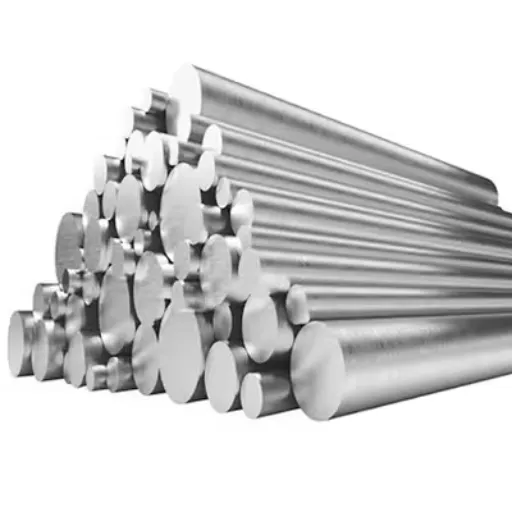With the increasing rise of industries, stainless steel cables are being utilized for their strength, dura bility, and resistance to corrosion. Construction, marine, and industrial applications all need the right type of stainless steel wire rope (commonly grade 304 or 316) to maintain safety and performance standards. The purpose of this guide is to explain the differences between these grades, the advantages each provides, and how to choose a supplier based on specific needs. We will discuss the best manufacturers of stainless steel cables who provide 304 and 316 wire ropes to equip you with the knowledge needed to make purchasing decisions. This guide will equip you with the information needed to intelligently source cables that are designed for particular applications.
What are the differences between 304 and 316 stainless steel cables?
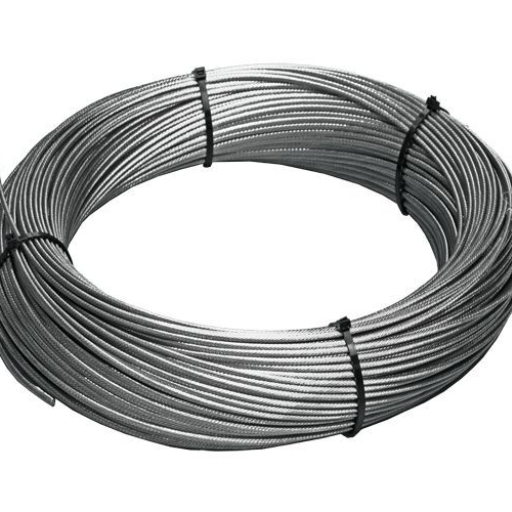
304 and 316 stainless steel cables differ primarily in their composition and resistance to corrosion. 304 stainless steel is an alloy containing chromium and nickel, known for its excellent strength, durability, and general resistance to oxidation and corrosion. It is suitable for most standard applications under moderate environmental conditions. On the other hand, 316 stainless steel includes the addition of molybdenum, enhancing its resistance to chloride-induced corrosion, such as in marine environments or areas exposed to saltwater or chemicals. While 304 is cost-effective and versatile, 316 is ideal for more demanding conditions requiring superior corrosion resistance. Selecting the appropriate type depends on the specific environmental and performance requirements of the application.
Comparing corrosion resistance of 304 vs 316 stainless steel
When comparing 304 and 316 stainless steel, the key distinction lies in their resistance to corrosion. 304 stainless steel offers excellent resistance to rust and oxidation under standard atmospheric conditions, making it a popular choice for indoor and outdoor applications that do not involve high chloride exposure. However, it is more susceptible to corrosion in environments containing salts, chemicals, or high humidity.
On the other hand, 316 stainless steel, with its addition of molybdenum, provides exceptional resistance to chloride-induced corrosion and other harsh environmental factors. This makes it especially suitable for marine environments, chemical processing, or areas where prolonged exposure to saltwater or deicing agents is common. Its superior performance under these conditions justifies the higher cost for demanding industrial or coastal applications.
Selecting between the two types ultimately depends on the specific operational setting. For general applications, 304 is a cost-efficient and reliable choice. However, for environments with aggressive corrosion risks, 316 is the recommended option to ensure durability and longevity.
Mechanical properties: Tensile strength and durability
When comparing 304 and 316 stainless steel, both exhibit excellent tensile strength and durability, though there are slight differences that could influence the choice depending on the application. Type 304 has a tensile strength of approximately 505 MPa (megapascals), making it robust and reliable for various structural uses. Type 316, while similar, often provides slightly better tensile strength, around 515 MPa, alongside enhanced resistance to wear in harsher environments.
Durability is a shared strength of both grades, with their inherent corrosion resistance ensuring long service life. However, type 316 stands out due to its added molybdenum content, offering superior resistance in saline or chemical-rich settings. This makes 316 particularly suitable for marine, industrial, and medical applications, where prolonged exposure to corrosive agents is unavoidable. Both types maintain structural integrity under stress, but environmental factors are key in determining which grade to select for optimized performance.
Price considerations: 304 vs 316 stainless steel wire rope
Calculation of the cost and performance ratio takes into consideration the difference in price between 304 and 316 stainless steel wire rope. In general, 316 stainless steel is likely to be more expensive than 304 because it has a higher composition of nickel and molybdenum, raising its overall cost by approximately 20-30%. There are some cases, however, where 304 becomes increasingly advantageous, particularly when dealing with environments that are not overly aggressive in terms of chemicals or salt. Conversely, for marine use, industrial applications, and for areas with high levels of corrosion, 316 becomes more useful as it makes a better initial expenditure because of less expensive maintenance and replacement costs over time.
How do I choose the right stainless steel cable for my project?
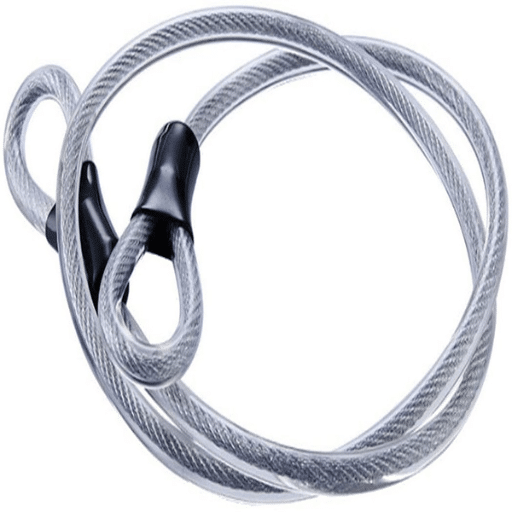
Choosing the right stainless steel cable depends on several key factors, including the environment, load requirements, and specific application needs. For general-purpose use or low-corrosion environments, 304 stainless steel is typically sufficient due to its affordability and durability. However, in highly corrosive settings such as marine or chemical industries, 316 stainless steel is recommended for its superior resistance to rust and harsh conditions. Additionally, consider the cable’s diameter and construction based on the intended load capacity and flexibility requirements. Evaluating these criteria ensures the cable will perform reliably and efficiently in your project.
Assessing your project requirements: Strength, flexibility, and environment
Strength
When determining the strength requirements for your project, consider both the load the cable needs to bear and its safety factor. Calculate the maximum working load the cable will support and ensure it has adequate breaking strength, typically 4 to 5 times higher than the load. For heavy-duty applications, select galvanized or stainless steel wire ropes with high tensile ratings.
Flexibility
Flexibility depends on the cable’s construction. Wire ropes with more strands and smaller wires are more flexible, making them ideal for applications requiring regular bending or movement, such as pulleys and cranes. Conversely, fewer strands with thicker wires provide rigidity and are better suited for static loads or straight-line pulls.
Environment
The operating environment significantly impacts material choice. For corrosive or wet conditions, stainless steel cables, particularly 316-grade, are highly resistant to rust and water exposure. Galvanized options work well in less corrosive conditions due to their protective zinc coating. Always choose a material that matches the environmental conditions to ensure durability and performance.
Understanding cable construction and strand configurations
The construction of cable and the configuration of strands are pivotal in determining the strength, flexibility, and general applicability of a wire rope. A wire rope consists of multiple strands wound around a core which can either be fiber, independent wire rope core (IWRC), or a steel core. Fiber cores are more pliable and cushioned than steel cores, while steel cores are strong and resistant to heat.
The arrangement of the wires and the configuration of the strands influences the properties of the rope. The most basic configurations are 1×7, 7×7, and 7×19. In these configurations, the first number stands for the number of strands, while the second one is the wires per strand. For instance, the 1×7 configuration is stiff and good for straight line maneuvers while 7×19 is more flexible allowing good use in pulley systems.
In tasks that require combination of strength, flexibility, and abrasion resistance, knowing how the diameter of wire affects the count of the strands and their configuration becomes vital. Always keep in mind the loads caused by tension, cycles of bending, and the environment when judging the configuration for particular requirements.
Selecting the appropriate cable diameter and breaking strength
When choosing the correct cable diameter, it’s crucial to identify the specific load requirements for the application. The cable’s diameter directly influences its tensile strength, with thicker cables offering greater load-bearing capacity but reduced flexibility. To determine the necessary breaking strength, calculate the maximum anticipated load and incorporate a safety factor—typically 5 to 10 times the maximum load, depending on the criticality of the operation.
Breaking strength is defined as the maximum force a cable can withstand before failing. Always refer to manufacturer specifications and ensure the selected cable matches or exceeds your calculated load requirements. Environmental factors such as temperature, corrosion, and abrasion impact cable performance, so opt for materials like stainless or galvanized steel when operating in harsh conditions. Remember, regular inspection and maintenance are vital to extending cable lifespan and ensuring safety.
What are the advantages of using stainless steel aircraft cable?

Stainless steel aircraft cable offers several key advantages, making it an excellent choice for demanding applications. Its primary benefit is superior corrosion resistance, which ensures durability and reliability in harsh environments, including exposure to moisture, chemicals, or saltwater. Additionally, stainless steel provides excellent strength-to-weight ratio, maintaining high tensile strength while remaining lightweight. This material is also resistant to extreme temperatures, making it suitable for both high-heat and freezing conditions. Furthermore, stainless steel cables require minimal maintenance, reducing long-term costs and downtime. Overall, these qualities make stainless steel aircraft cable a robust and versatile option for various industrial and commercial uses.
Exploring the benefits of high strength-to-weight ratio
The high strength-to-weight ratio of stainless steel aircraft cables provides a host of advantages across industries. Firstly, this property allows for the construction of durable yet lightweight structures, reducing overall system weight and improving efficiency, especially in aerospace, automotive, and maritime applications. Secondly, materials with superior strength-to-weight ratios ensure safety and reliability under high stress, making them indispensable in critical load-bearing applications or environments with constant dynamic forces. Finally, the reduced material weight contributes to lower fuel consumption and transportation costs, supporting sustainability goals and operational savings. These combined benefits make high strength-to-weight ratio materials valuable in both performance-focused and cost-efficient engineering designs.
Applications of stainless steel aircraft cable in various industries
The rigidity, support, and protection provided by stainless steel makes its aircraft cables a key component for structures across different fields, especially because they are highly resistant to corrosion, making them useful in harsh conditions. This the reason why it is widely used in the aerospace industry, to control, hitch sensitive equipment, and secure cargo. The aircraft cables also find applications in construction due to their aesthetic appeal and durability such as railings and structural support on bridges. Also, because the cables are so resistant to saltwater corrosion, they are useful for rigging, mooring, and deck rails in the marine industry too. In industrial equipment, the cables are used to tow, lift, and secure heavy loads. The multi-functions that the stainless steel aircraft cable serves proves its efficiency for all these fields.
Comparing stainless steel aircraft cable to galvanized alternatives
When comparing stainless steel aircraft cable to its galvanized counterpart, key differences emerge in terms of durability, cost, and intended applications. Stainless steel cables excel in corrosion resistance, making them ideal for environments exposed to moisture, saltwater, or harsh weather conditions. This superior resistance leads to a longer lifespan and reduced maintenance needs. On the other hand, galvanized cables feature a zinc coating that provides temporary protection against rust but is less effective in highly corrosive settings, making them more suitable for short-term or indoor use.
From a cost perspective, galvanized cables are typically more affordable upfront, offering a budget-friendly option for projects where long-term exposure to harsh elements isn’t a concern. However, stainless steel cables, while more expensive initially, provide greater value over time due to their resilience and reduced need for replacement.
Finally, the choice between the two depends on the specific application. Stainless steel’s blend of strength and protection is essential for marine, architectural, and safety-critical uses, while galvanized cables are often sufficient for basic industrial, agricultural, and temporary tasks. By understanding these distinctions, users can make an informed decision based on their project’s requirements and environmental challenges.
Where can I find custom wire rope assemblies and fittings?
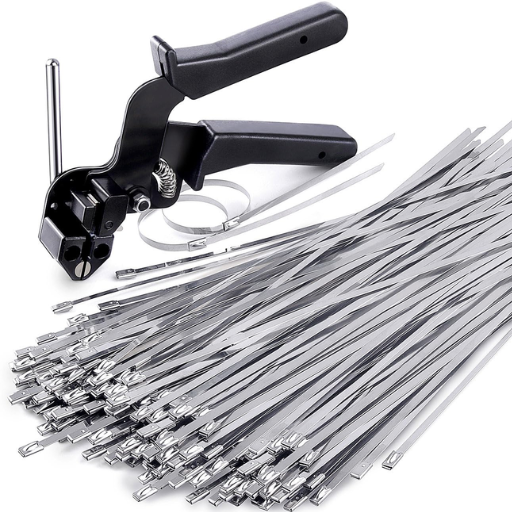
When searching for custom wire rope assemblies and fittings, it is best to turn to specialized suppliers or manufacturers with expertise in wire rope solutions. Many companies offer tailored services to design and fabricate assemblies to meet specific project needs. Look for providers that supply high-quality materials, offer a range of fittings, and provide professional guidance to ensure your assembly is optimized for safety, durability, and performance. Online directories, industry-specific marketplaces, or direct contact with manufacturers are excellent starting points to find reliable options.
Leading manufacturers offering custom cable assemblies
TE Connectivity
TE Connectivity is a globally recognized leader in custom cable assembly manufacturing, offering solutions tailored to various industries, including medical, automotive, and industrial applications. They provide high-performance cabling with a focus on precision engineering, ensuring superior durability, signal integrity, and efficiency. Their customizable options cater to specific client requirements, backed by a robust support system and global reach.
Molex
Molex specializes in delivering custom cable assemblies that span a wide range of uses, from data systems to consumer electronics. Known for their innovative designs and advanced technologies, Molex integrates cutting-edge materials to create assemblies that meet strict industry standards. Their commitment to sustainability and quality makes them a reliable partner for businesses requiring scalable and high-quality cabling solutions.
Amphenol Corporation
Amphenol Corporation stands out as a top provider of custom cable assemblies, serving markets such as aerospace, defense, and telecommunications. Their expertise lies in developing highly specialized assemblies engineered to perform under demanding conditions. With a strong emphasis on collaboration, Amphenol focuses on providing tailored solutions that enhance efficiency and reliability while ensuring compliance with rigorous industry requirements.
These manufacturers represent some of the most trusted names in the industry, known for their commitment to quality, innovation, and customer satisfaction.
Types of fittings available for stainless steel wire rope
Stainless steel wire rope fittings come in a variety of types to suit different applications and ensure secure and reliable connections. Some of the most common fittings include:
Swage Fittings
These fittings are permanently attached to the wire rope by swaging, providing a strong and clean connection. They are ideal for creating fixed end terminations or loops.
Wire Rope Clips
Also known as cable clamps, these fittings are designed for temporary or adjustable connections. Available in U-bolt or double-saddle designs, they are simple to install and frequently used in rigging.
Turnbuckles
Turnbuckles are essential for tensioning wire ropes. They feature threaded end fittings that adjust tension precisely, ensuring stability in structural or support applications.
Thimbles
Thimbles protect the wire rope from wear and deformation, particularly when creating secure eye loops. They maintain the rope’s shape and extend its lifespan.
Sleeves and Ferrules
Used for crimping, these fittings create a tight, secure connection by compressing the sleeve or ferrule around the rope. They are commonly used in conjunction with specialized tools.
Hooks and Shackles
These attachments provide versatility in lifting, securing, or connecting wire ropes to other components. Designed for robust performance, they can handle heavy loads effectively.
Each type of fitting is engineered with specific materials and finishes to ensure durability, corrosion resistance, and compatibility with stainless steel wire ropes in various environments. Choosing the right fitting depends on the application, load requirements, and exposure conditions.
Importance of proper assembly and installation techniques
Proper assembly and installation techniques are critical to ensure the safe and efficient performance of stainless steel wire rope fittings. Incorrect installation can compromise the strength and durability of the fittings, increasing the risk of failure under load. To achieve optimal performance, it is essential to follow manufacturer guidelines, including torque specifications, alignment standards, and compatibility checks. Regular inspection during and after installation ensures that all components are securely fastened and free from defects such as fraying or corrosion.
Additionally, using the right tools and equipment is paramount for precision and effective assembly. Employing certified professionals or trained personnel ensures adherence to industry standards, which helps mitigate potential hazards and prolongs the lifespan of the wire rope systems. By prioritizing proper techniques, users can maintain operational safety and reliability across various applications.
What are the best stainless steel cable options for cable railing systems?
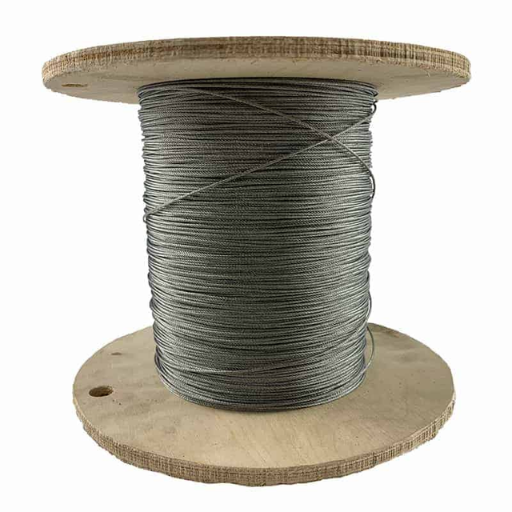
Stainless steel cables for cable railings have to be balanced with the ease of mounting, durability and corrosive elements. In consideration of these factors, it would be prudent to utilize 316 grade stainless steel cables because they offer the best protection against rust and weathering, which is crucial for coastal and humid regions. Railings require cables with a 1×19 strand configuration because they offer almost no elongation or deviation as well as a polished look. For more complex designs, 7×7 or 7×19 configurations are ideal as they offer greater flexibility. Safety standards for the wires applied must be compliant and they should be used with the right fittings if the system is to be efficient and durable.
Recommended cable types and sizes for residential and commercial railings
Stainless steel cables are the default option when choosing cable types and sizes for railings because of their strength, resistance to corrosion, and stylish look. For most residential and commercial purposes, a stainless steel 1×19 configuration is preferred because it has high tensile strength and very low stretch, which maintains a clean, taut appearance. The ideal diameter lies between 1/8 inch and 3/16 inch because these sizes provide adequate strength while remaining inconspicuous, serving both functional and decorative goals.
For some applications that need more flexibility, like for curved railings or other complex design features, a 7×7 or 7×19 cable configuration is recommended. These options still maintain acceptable levels of strength and durability but are more changeable to non-linear alterations to design. Always check that the cable selected meets local building regulations and is compatible with the tensioning systems and fittings for safe and reliable installation. Cables must always be used with properly designed supports or frames so that the system can effectively handle the anticipated loads.
Comparing wire rope products for outdoor vs indoor cable railings
Factors such as the material, coating, and overall durability of wire rope products should be evaluated for both outdoor and indoor cable railings. For external applications, a greater grade of wire rope like stainless steel 316 is recommended because it is robust against deterioration from harsh rain, humidity, UV radiation, or any other scathing features of the environment. Moreover, outdoor cable railings can be enhanced with additional coatings like PVC or marine-grade paint that can withstand UV rays to improve the system’s longevity.
While indoor applications prefer the aesthetic appeal of stainless steel, grade 304 stainless steel or galvanized steel can also be utilized due to the lack of severe weather. Indoor applications do not consider environmental factors a priority and prefer focusing on the style and ease of installation.
As mentioned, the overarching goals of a project will dictate if wire rope products should be protected against inner or outer environmental features. Installations in areas that are likely to bare the brunt of weather changes are better off prioritizing durability while areas indoors require flexibility with the materials used to smoothly integrate them into pre-existing interior furnishings. Regardless, optimal performance can only be achieved after proper consideration is given to the intended installation environment.
Maintenance tips for long-lasting stainless steel cable railings
Basic upkeep: Cleaning of your stainless steel cable railings must be done every three to six months to remove any residues, salt, or other contaminants that may negotiate over time. For cleaning purposes, cling to a soft cloth with warm water, along with a soap or a stainless steel cleaner, in order to preserve your railings from corrosion as well as maintain their glow.
Look for Fraying Cables and Loose Hardware: Periodically inspect the cables along with the fittings for signs of wear and tear, fraying, loss of tension, and other such factors. Stopping small issues from evolving into huge problems helps increase system longevity.
Suppress Rust: Additional care must be taken for outdoor installations, especially near the coast. To help stop oxidation from saltwater, and increase the durability of the construction, apply a polish or protective coating for stainless steel.
Avoid Direct Contact with Powerful Cleansing Agents: Chlorine, bleach, and any other strong cleansing agent should not be sprayed onto the railings as they will compromise the corrosion resistance of the material. Should such event take place, be sure to rinse the surface thoroughly afterward.
Tension Adjustment for Aesthetic Perfection: Using or environment can cause cables to loosen over time. Adjusting the tension helps maintain balance with optimal performance.
Promptly Eliminate Rust and Discoloration: If you notice minor rust or discoloration, get rid of them using a non-scratching cleaning pad and a suitable stainless steel cleaner. This will prevent further damage.
Applying Lubricants: If your railings have any adjustable components, add a thin layer of lubricant oil to ensure dirt does not accumulate and that these parts can move freely as intended.
Repetitively performing these actions will allow your stainless steel cable railings to maintain their structural integrity, safety, and appearance for a prolonged period.
References
Frequently Asked Questions (FAQ)
Q: What are the main differences between 304 and 316 stainless steel cables?
A: 304 stainless steel is the most common grade, offering good corrosion resistance and strength. 316 stainless steel contains molybdenum, making it more resistant to chemical corrosion and suitable for marine environments. 316 is generally more expensive but offers superior durability in harsh conditions.
Q: How do I choose the right stainless steel cable manufacturer for my project?
A: When selecting a stainless steel cable manufacturer, consider factors such as their reputation, product range, quality certifications, customization options, and customer support. Look for leading manufacturers with experience in producing various types of wire rope and cables, including galvanized wire rope and specialty steel options.
Q: What are the advantages of using stainless steel cables over galvanized steel cables?
A: Stainless steel cables offer superior corrosion resistance, longer lifespan, and better aesthetic appeal compared to galvanized steel cables. While galvanized steel cables are more affordable, stainless steel cables provide greater strength and flexibility, making them ideal for applications requiring durability and low maintenance.
Q: Can stainless steel cable manufacturers produce custom wire rope and cable solutions?
A: Yes, many leading stainless steel cable manufacturers offer custom solutions. They can produce various types of wire rope and cable to meet specific project requirements, including coated cable, braided steel cable, and mechanical cable with custom fittings and lengths.
Q: What are some common applications for 304 stainless steel cables?
A: Type 304 stainless steel cables are widely used in various industries due to their versatility and corrosion resistance. Common applications include architectural railings, marine rigging, industrial machinery, automotive components, and general-purpose wire rope for lifting and securing loads.
Q: How do I maintain and inspect stainless steel cables to ensure their longevity?
A: To maintain stainless steel cables, regularly clean them with fresh water and mild soap, especially in marine environments. Inspect cables for signs of wear, fraying, or corrosion. Check for broken wires, kinks, or deformations. Lubricate cables as recommended by the manufacturer. If you notice any damage, contact the cable manufacturer or a professional for assessment and replacement if necessary.
Q: What certifications should I look for when choosing a stainless steel cable manufacturer?
A: Look for manufacturers with ISO 9001 certification for quality management systems. Additionally, certifications such as API (American Petroleum Institute) for offshore applications, DNV GL for marine and energy sectors, and compliance with ASTM standards are indicators of a reputable stainless steel cable manufacturer and supplier.
Q: Are there any specialty stainless steel cables available for specific applications?
A: Yes, many cable and wire rope manufacturers offer specialty steel cables for specific applications. These may include rotation-resistant wire rope for crane operations, push-pull cables for mechanical control systems, and high-strength braided cables for demanding industrial uses. Contact leading manufacturers to discuss your specific requirements and available options.





